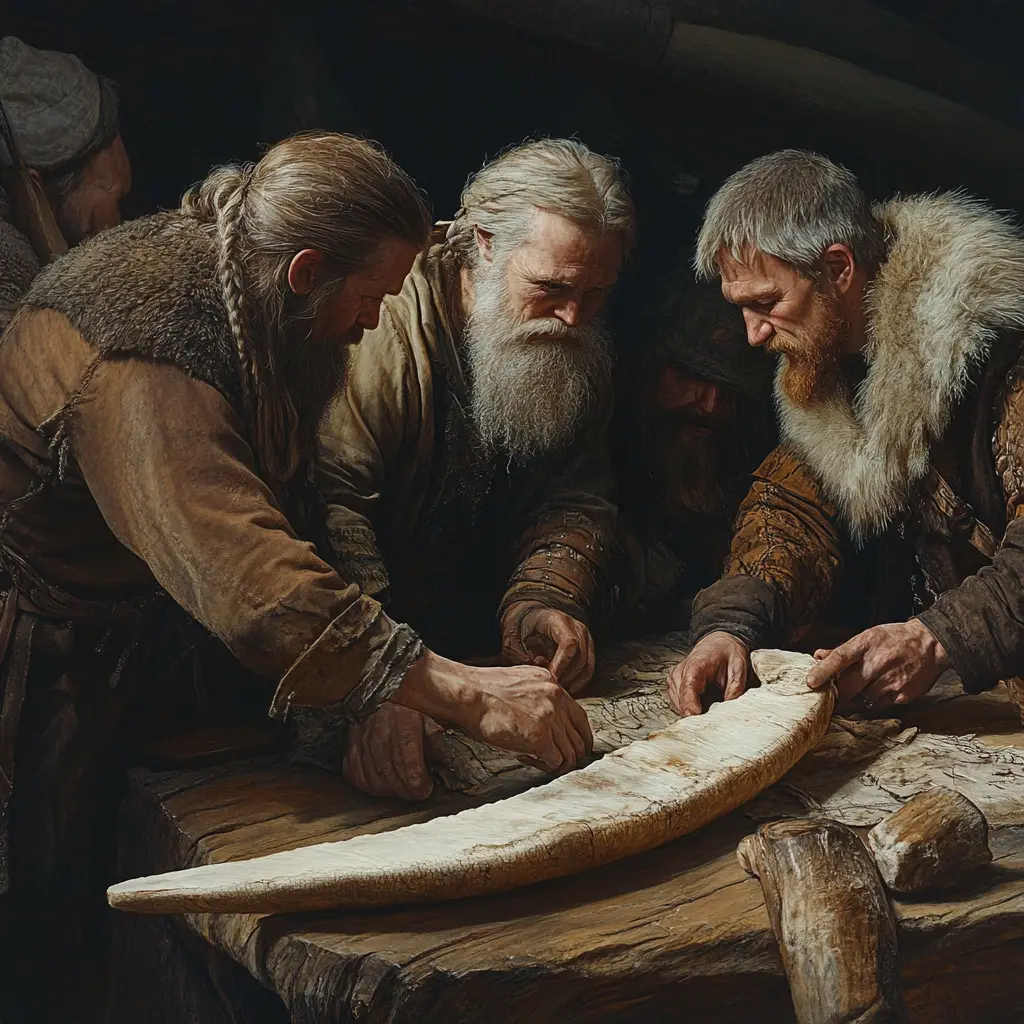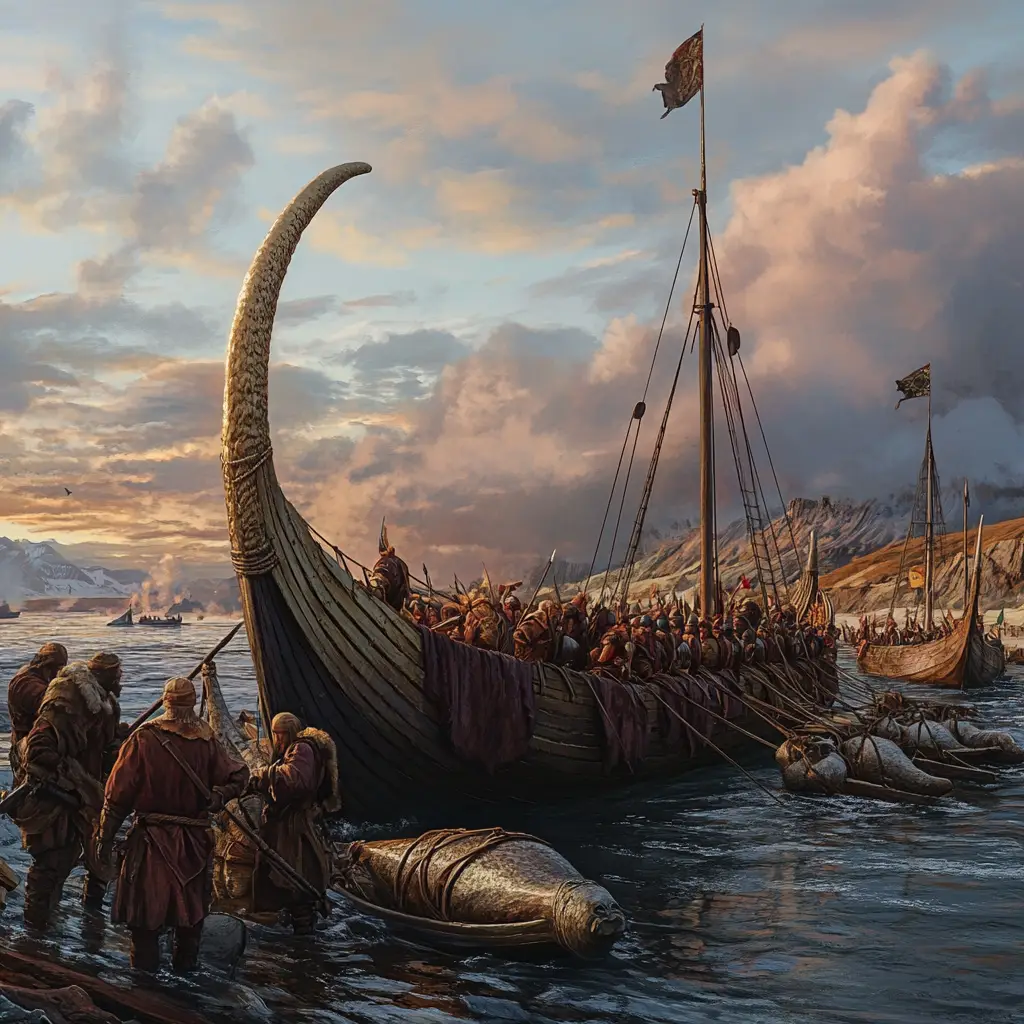During the Viking Age, Norse merchants were skilled traders who dealt in a wide range of rare and exotic goods. Among the most extraordinary items they sold were so-called “unicorn horns,” which were highly prized across medieval Europe. These “unicorn horns” were in fact the long, spiralled tusks of the narwhal, a marine mammal found in Arctic waters.
Viking traders sourced these tusks from hunting expeditions in Greenland and other northern territories, or through trade networks reaching Arctic peoples who hunted narwhals. In medieval Europe, these tusks were believed to be the horns of the legendary unicorn, a creature of myth said to possess powerful healing properties. Buyers were convinced that drinking from a cup fashioned from a unicorn horn, or touching one, could neutralise poisons and cure disease.
As a result, narwhal tusks commanded extraordinary prices, and Viking merchants made considerable profits by transporting them south into wealthy European markets. These trade goods were so rare and mysterious that even kings and popes paid vast sums for them, eager to own what they believed was proof of the unicorn’s existence.
By capitalising on the fascination with mythical beasts and the desire for luxury items with supposed magical powers, the Vikings demonstrated their remarkable ability to exploit demand, connect distant cultures, and build wealth through far-reaching trade routes. Their role in supplying “unicorn horns” to medieval Europe is a fascinating example of how Norse traders combined practical seafaring skill with a keen eye for valuable, exotic goods.



